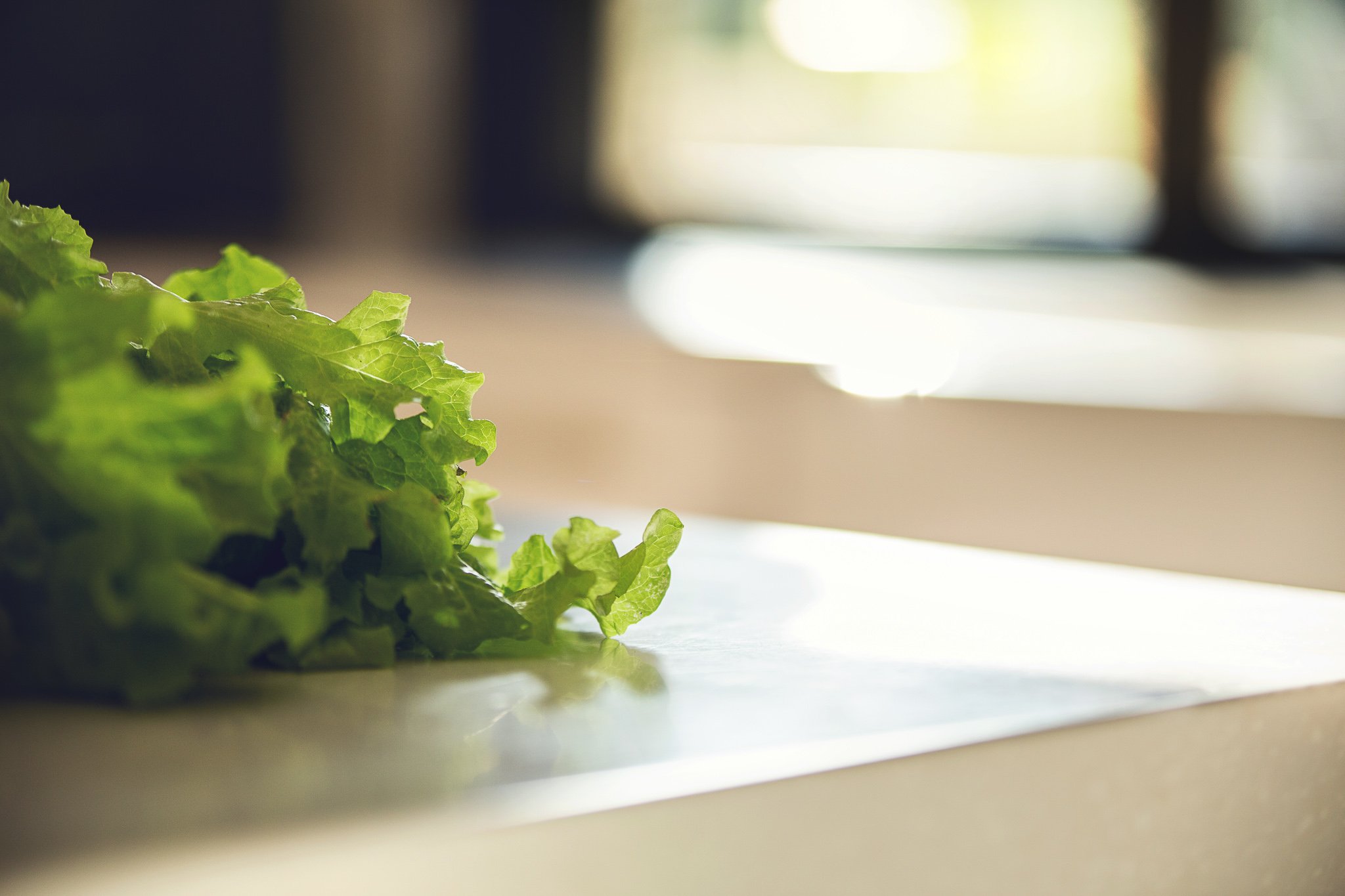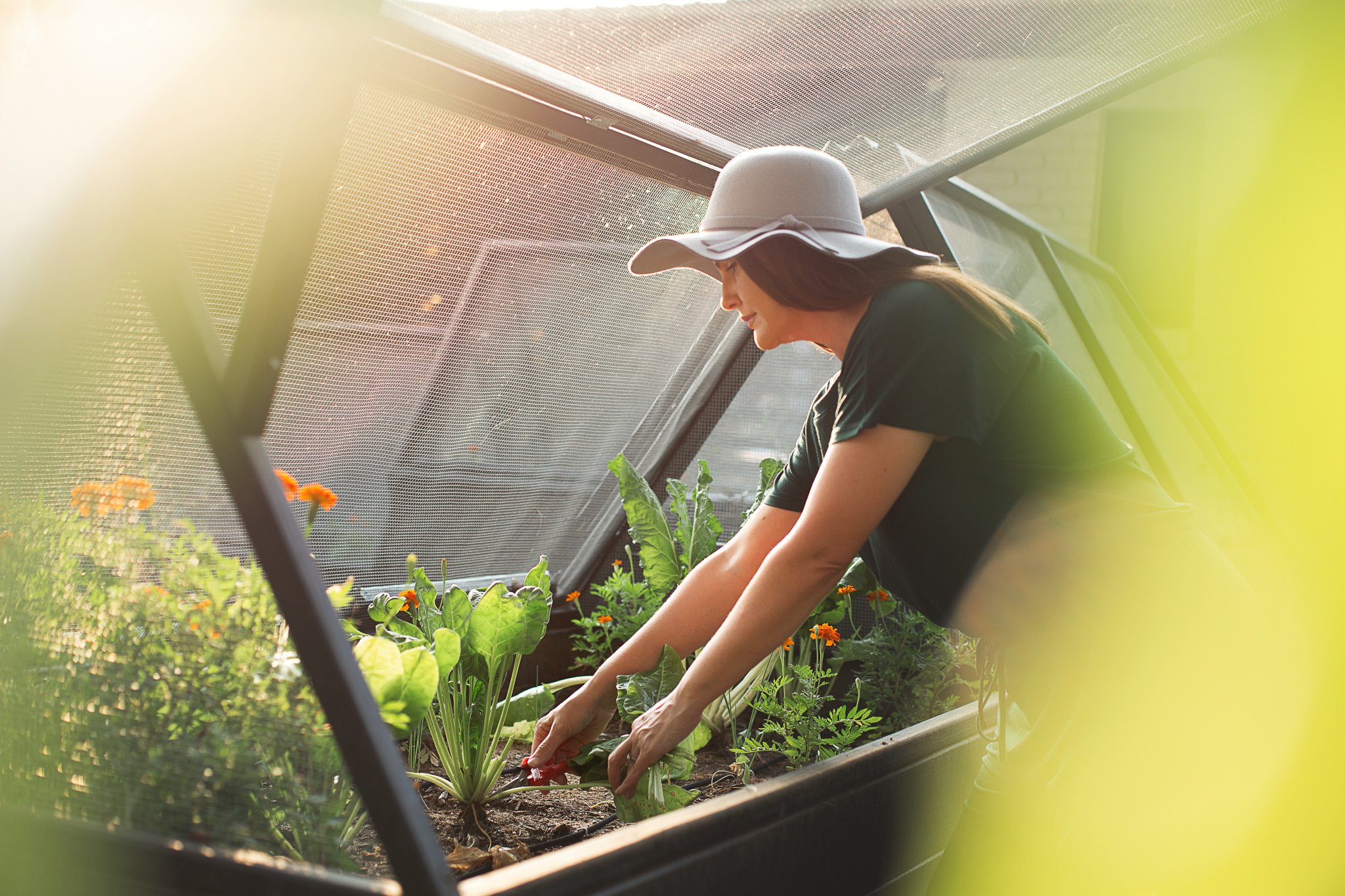The Beginner’s Guide to Apartment Gardening in a Small Space
This page may contain affiliate links. Click here to learn more
Starting a garden in a small space is not only fun but beneficial to your health.
If you have access to a rooftop, balcony or patio you have the space to grow organic, fresh produce and create your own private oasis.
Container gardening or vertical gardening allows those of us without much space to grow edible foods and to maximize the existing area. Not only does apartment gardening boost your mood in a confined urban space but it also can improve your health by connecting you back to nature.
Benefits of Gardening in a Small Space
Gardening, in general, produces many rewards in a person’s life. When living in a tight urban landscape it’s easy to feel like you're living in a machine with the constant tight quarters and pulse of the city. One of the creative ways to combat this feeling is to start a garden!
Advantages to gardening in a small space are that you’re able to create a show-stopping space to enjoy that is relatively low-maintenance. The benefit of gardening in an apartment or condo is that it can easily improve your health by giving you instant access to fresh herbs and produce for clean eating. A natural stress reliever, plants can improve the quality of air in your space as well as connect you back to nature.
How to Start an Apartment Garden
Before you get started planning your garden there are a few considerations to work though. Most importantly, do you have permission to have plants in your apartment or condo’s outdoor space? Once this is verified with your complex you can work through the following considerations to make the most of your tiny edible garden.
Apartment Gardening Considerations
Permission- This is the most important thing to establish first. It would be a shame to invest in a garden only to have to abandon the project later.
Space- What kind of space will you be working with? Indoor? Outdoor? Ground level? Balcony? Can you go vertical to maximize? Know what you are working with in order to plan accordingly.
Time- Gardening is an investment of time. Do you have the space in your life to be able to tend to a garden on a daily basis, as well as morning and evening? A lot can change in a space quickly so you want to make sure you can connect regularly with your garden.
Light- Direction of sun? I would suggest taking time over a week’s period to observe the light and to document your findings. This will help you know what plants to choose for the space and if any additional support is needed.
Soil- When you have an apartment garden on a balcony, the weight of pots filled with dirt can be problematic and additional stress on the support system of the balcony. When considering this, it is important to find the ‘lightest’ soil you can find. Discuss this with your local garden center to ensure you can use a low-weight garden soil in your containers.
Water- How will you get water to the plants? Can you design your space to maximize water usage with a drip system? New self-watering container systems are on the market which take some of the stress out of gardening but are not necessarily a money saver. Choose the solution that’s right for your budget and your space.
Season and Environment- What zone do you reside? Observe things like humidity, wind, and temperature. Like the sun, these are very important elements to pay attention to. The wind can be harsh on plants as well as a complete lack of airflow. Document these findings the week you are observing your light path to set up an ideal small garden space.
Consider water run off- You’ve settled on how your water will get to your plants but it is just as important to know where the water will travel after each watering. I’m sure your below neighbor would not appreciate having water run down to their space every time you water. For that reason, I suggest placing your containers on saucers or trays and to water from below the plants. This is healthier for the plants to prevent fungus and mildew from forming. As mentioned before, there are also self-watering containers you can source.
Determine what type of plants you want- Edible, non-edible, both? The most fun part of your planning lies in choosing your plants. If you’ve done the above homework thoroughly this part should be easy…..
Apartment Gardening Tools
Watering can
Spray bottle
Trowel
Scissors/shears
Gloves
Small broom/dustpan
Insecticidal soap
Fertilizer
Trellises
Aesthetically appealing pots (terra cotta holds moisture longer)
Coconut Coir for mulch
Apartment Gardening Care
Diagnose watering needs and regulate with products like clay self-watering spikes or self watering planters
Pest/disease control- I always say it’s better to be on the offensive when it comes to gardening. Two products that are important to have on-hand are insecticidal soap and a product that will help you combat any fungus in a tight space.
Find the light and move plants accordingly. Sometimes gardening in a tight space means you need to turn your plant when necessary to ensure an even exposure to light.
Be conscious of temperature and consider placing low weight mulches such as coconut coir on top of soil to lock in moisture.
Designing an Apartment Garden to Maximize Your Space
The ideas for your small space garden are endless. So many people have come up with creative ways to use railings, walls, gutters, etc to make the most of their tiny, productive gardens. Use your imagination! Here are a few ideas of how to design your apartment garden:
Vertical gardening
Go vertical! Use what your have in place such as wall pocket planters fixed to exterior walls. You can also use balcony railings with pots placed in front for vining plants to climb. One of my favorite ways to go vertical is to use a system of vertical stacked containers like Mr. Stacky products to place in a corner. They are easy to rotate and turn and by watering from the top you are ensuring the water trickles down to each level to be used up completely before reaching the bottom.
Hydroponics
Much like vertical stacked containers, my favorite all-in-one hydroponic system from Lettuce Grow is amazing. I’ve had mine for years and have experimented growing all sorts of out-of-season produce inside the house as well as in-season outside. I originally used the farmstand outside but ended up investing in the lights and placing the system in my entry way so I always have fresh salad and strawberries year round. Lettuce Grow Farmstand is designed for ease. You will need a hose to hook up to fill the reservoir and can find attachment systems for faucets if you are on an upper floor.
Portable containers
Using pots with wheels allows you to easily move to find the light. And hanging flower containers can be hooked onto balcony railings for herbs and trailing vegetables. Here is a great hook-on system.
Countertop herbs and microgreens
Another favorite product that my daughter swoons over is the easy-to-set-up Click and Grow! If you have counter space, this product is virtually maintenance free (accept harvesting, of course). This is a favorite in our household for mini-tomatoes, herbs and peppers.
Windowsill gardening
Gardening on a window sill is popular for microgreens as well as herbs. But what if you don’t have a sill to set things on? Acrylic shelves with suction cups are a great product to display your plants and give them the light they deserve. I also use these when I want to start seedlings quickly without using my whole light shelving set up.
Tabletop square foot garden
Image source: Better Homes and Gardens
Have an outdoor table with decent light? Place a small pot in the middle and fill it with herbs and salad greens! I’ve seen people get creative and use old recycled drawers or metal wash tubs. Harvest often and successively sow your seeds for a continual harvest.
Edible Ideas for Small Space Gardens
Get creative and build a beautiful and bountiful small-space ecosystem! Consider interplanting small variety vegetables, fruit and herbs with ornamental plants in your apartment garden containers. By mixing edible flowers such as calendula, marigolds, and nasturtium you will attract beneficial insects which create an organic pest control system, add a pop of color to your space and also increase your food supply by growing edible flowers for your salads.
seed companies I trust
When gardening in a small space I like to source out compact, dwarf varieties of plants. Dwarf doesn’t mean smaller fruit but smaller plant. My fig, for instance, is a Little Miss Figgy which loves growing in the tight space of a 16” x 16” pot but produces full sized figs.
Another trick to getting the most out of your edible space is to interplant. Don’t just put one vegetable or herb in a pot. Mix and match! The following edibles are great for small spaces:
Herbs: parsley, cilantro, basil, thyme, chives, mint
Greens: lettuce, chard, kale, bok choy, spinach
Vegetables: dwarf or patio variety cherry tomatoes, peppers, peas, pole beans, cucumbers, fruit trees (Meyer lemon, avocado), strawberries, radishes
Our favorite containers for growing apartment garden salad greens
Metal Pots
Clay or Terracotta Pots
Washer Tubs
Shallow Trays for Microgreens
ZZ plants are some of the easiest to keep in a low light environment and require little water.
Vitality from VermisTerra is my favorite nutrient support for both edible plants and houseplants!
Use code ‘THESEEDSAGE’ for 10% OFF
Best Non-edible Low-light Indoor Plants for Small Space Gardening
snake plant
zz
pythos
spider plant
cast iron
peace lily
fern
philodendron
Tips from this article have been featured on Redfin.com
The Seed Sage occasionally links to goods or services offered by vendors to help you find the best products to care for plants. Some of these may be affiliate links, meaning we earn a small commission if items are purchased.
As an Amazon Associate, we earn from qualifying purchases. More info on our process here.
SHOP THE PRODUCTS MENTIONED IN THIS ARTICLE
Click Here for Garden-to-Plate Recipes
Click Here for Garden-to-Plate Recipes
need more help
WANT THE GARDEN OF YOUR DREAMS?
Let us help you design and install your 2022 Kitchen Garden!





























Gardening in Central Texas, specifically in zones 8b and 9, presents a unique opportunity for growing a variety of flavorful and healthful crops. Among these, garlic and shallots stand out as excellent choices for both novice and experienced gardeners. Here’s why you should consider adding these culinary staples to your garden.